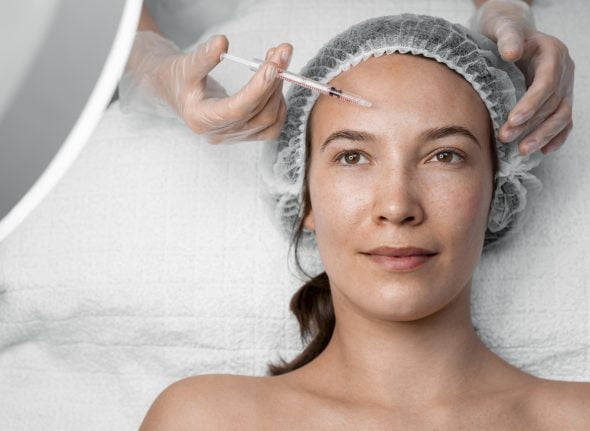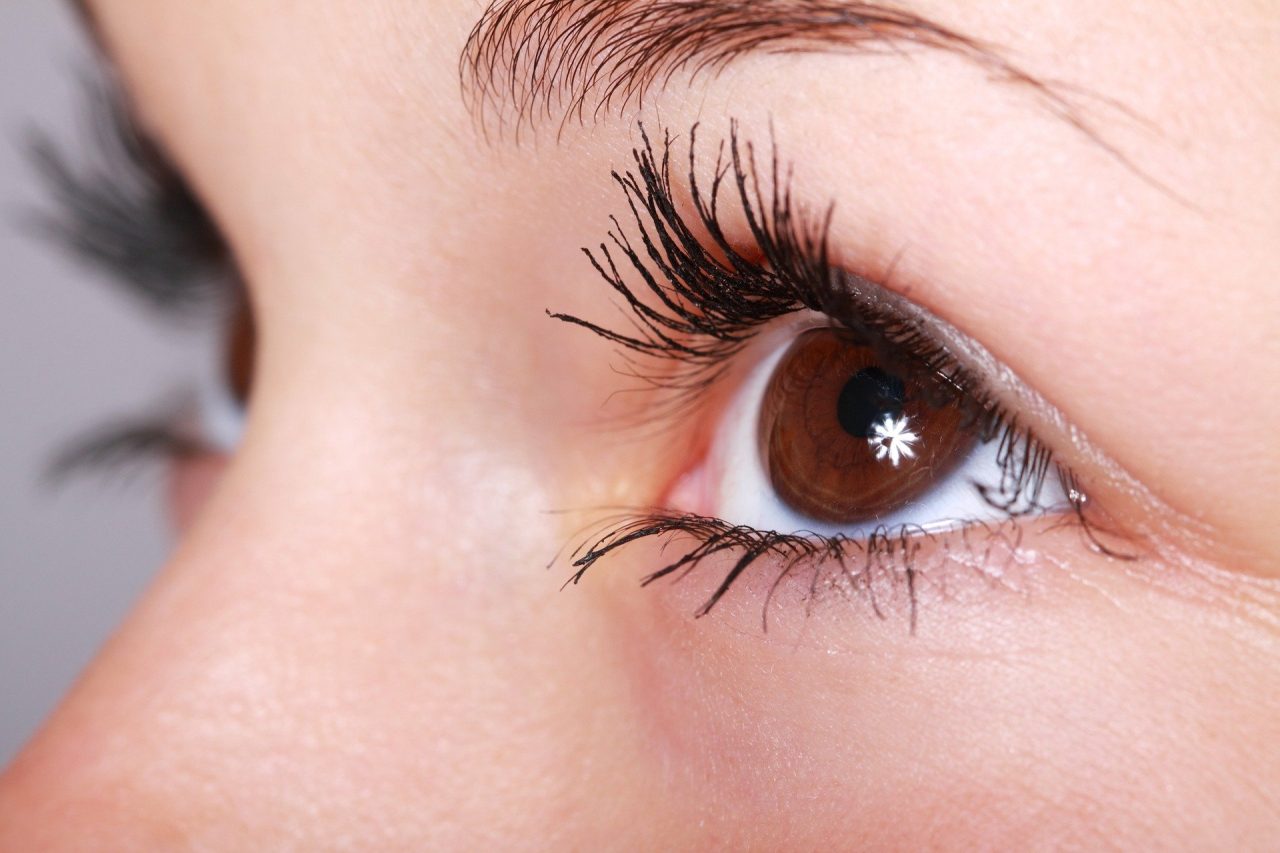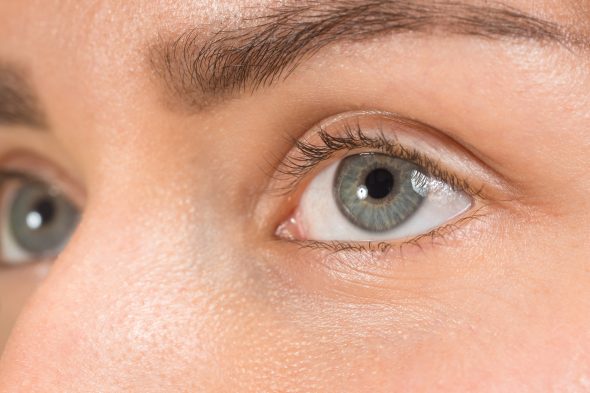

Ptosis Surgery Recovery – What to Expect
Daniel Ezra, 10 March 2020

“Ptosis” is the medical term describing a droopy eyelid. It is a medical condition affecting both children and adults, causing either one or both of the upper eyelids to droop down into a position that is lower than normal. Children with ptosis are typically born with the condition (congenital), whereas adults may develop it through age, after eye trauma, eye surgery, after repeated contact lens usage or as a result of an underlying neurological condition.
Cosmetic issues aside, drooping eyelids can cause several medical problems, including interrupting the field of vision, headaches, brow ache, fatigue and eye strain. As such, many patients will decide to undergo ptosis surgery in order to fix problematic droopy eyelids.
Here, we answer several frequently asked questions about the ptosis surgery recovery process, including recommended aftercare advice, whether there will be any scarring and if a repeat treatment is necessary.
What is the aftercare advice following ptosis surgery?
After coming out of surgery, you will feel that the vision is blurred as a result of the thick ointment placed at the end of the procedure to ensure that the eye is kept moist and well lubricated. A padded dressing may be placed on the eyelid to help reduce the swelling, and this should be left on for the first day. It can be removed at home by patients themselves, but care must be taken to follow the instructions provided by the nurse when leaving the clinic. The nurse will also help to clean the eyelids before leaving the hospital.
Once at home, you should follow the instructions given to you. Ointment and/or eye drops will be prescribed and these should be placed in the eye to prevent dryness, which is common after surgery and can cause irritation. At day 5 after the surgery, you should start to wash the eyelids gently. This will help to clean the sutures and make it easier to remove them.
After 1 week, we will ask you to come into the clinic for a follow-up appointment in order to see how you are healing and check the position of your eyelid. After that, we will ask you to come to the clinic again at some point in the next 12 weeks so that we can properly assess the result of surgery once the swelling and bruising has settled down. Stitches may be removed in the clinic at the first follow-up appointment, or they may dissolve themselves, depending on the type used.
Can I go home after surgery?
Adult patients will normally be able to go home just a few hours after surgery, but children are advised to stay at the hospital until the anaesthetic has worn off. It is important that all patients arrange for a friend or relative to pick them up from the clinic after surgery, as it isn’t safe to drive for the first 24 hours. Depending on how you feel, you might wish to have a companion look after you for the first day.
Will I need to take any time off work?
The recovery period after droopy eyelid treatment is quite minimal, with most patients being able to return to work soon afterwards. It really does depend on how you, as an individual. feel. Working from home using a laptop can be undertaken the next day and working from home may be preferable for some patients. Moreover, if your work is particularly manual or involves any sort of heavy lifting, it is advisable to have 1-2 weeks of rest before returning to your job.
Is there any scarring?
Droopy eyelid treatment is carried out in such a way that the scarring is kept to a minimum. The procedure involves a hidden incision, which is made within the upper eyelid’s natural skin crease. This means that scarring will be barely visible once the stitches are removed. Sometimes, the procedure can be performed from the inside of the eyelid meaning that there is no skin scar at all.
Is there any bruising?
It is common to experience moderate bruising and swelling while recovering from ptosis surgery and the extent of this will differ depending on the patient. For most people, the bruising on the upper eyelid will typically subside within 7-10 days, particularly is the post-surgical aftercare advice is adhered to properly. Swelling and bruising can be reduced by gently placing an ice pack on the eyelids and sleeping in a propped up position for the first couple of days.
Will I be in pain?
For the first couple of days, you are likely to feel a little sore and uncomfortable, but taking over-the-counter paracetamol should be enough to help ease the pain. If you experience any problems, such as very sharp pain, poor vision or excessive bleeding, you should seek emergency medical help. These symptoms are not usual and could indicate something wrong.
Should I avoid any specific activities?
In order to keep the wound clean and dry, and to avoid irritation, swimming is not advised for the first couple of weeks following the operation. When showering or bathing, it is important to try to keep the eye area dry for the first 5 days. If your eyes get wet, pat dry with a clean cotton pad afterwards, refraining from any rubbing motion. After day 5 the eyes should be gently washed and pat dried to keep the wound clean.
The upper eyelid area may be sore and bruised for the first 7-10 days, so we suggest patients refrain from heavy lifting and strenuous physical exercise to prevent over-exertion. Having some downtime may allow patients to recover at a quicker rate. We recommend not wearing contact lenses for the first couple of weeks, or until the surgeon says it is okay to do so. If you go out in sunlight, it is important to wear sunglasses to protect the eyes.
Can I wear make-up after ptosis surgery?
This will depend on how things settle after surgery. However, make-up can usually be worn after 10-14 days.
Will I need repeat treatment?
Droopy eyelids can return at any point during a person’s life, so it is difficult to predict whether repeat treatment will be necessary. The results depend on each individual patient, however, Audit data has predicted that between 80-85% of patients are satisfactorily corrected after the first surgery. This means that around 15-20% of people might need to undergo another operation, particularly if the eyelid positioning is not right, if the lid curve is irregular, or if the folds in the skin of the upper eyelid are not symmetrical.
Repeat surgery is more complicated, which is why it is important to find an expert eye surgeon, like Daniel Ezra, who will be best placed to get the procedure right the first time.
To book a consultation for ptosis (droopy eyelid) treatment, fill out our enquiry form or contact the clinic on 020 7127 8184.

